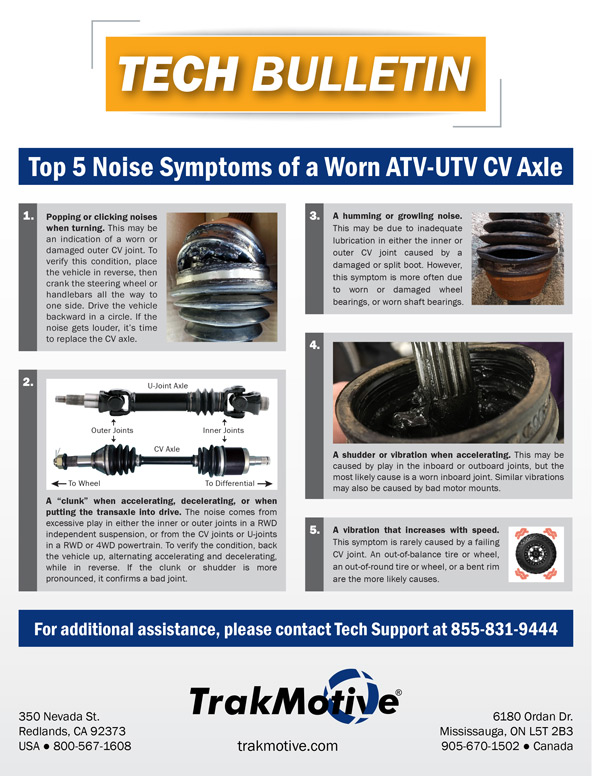1. Popping or clicking noises when turning.
This may be an indication of a worn or damaged outer CV joint. To verify this condition, place the vehicle in reverse, then crank the steering wheel or handlebars all the way to one side. Drive the vehicle backward in a circle. If the noise gets louder, it’s time to replace the CV axle.
2. A “clunk” when accelerating, decelerating, or when putting the transaxle into drive.
The noise comes from excessive play in either the inner or outer joints in a RWD independent suspension, or from the CV joints or U-joints in a RWD or 4WD powertrain. To verify the condition, back the vehicle up, alternating accelerating and decelerating, while in reverse. If the clunk or shudder is more pronounced, it confirms a bad joint.
3. A humming or growling noise.
This may be due to inadequate lubrication in either the inner or outer CV joint caused by a damaged or split boot. However, this symptom is more often due to worn or damaged wheel bearings, or worn shaft bearings.
4. A shudder or vibration when accelerating.
This may be caused by play in the inboard or outboard joints, but the most likely cause is a worn inboard joint. Similar vibrations may also be caused by bad motor mounts.
5. A vibration that increases with speed.
This symptom is rarely caused by a failing CV joint. An out-of-balance tire or wheel, an out-of-round tire or wheel, or a bent rim are the more likely causes.

